Africa

 Japan entered World War I as a member of the Allies on August 23, 1914. Assisting the Allies with the war effort was not their reason for doing so, however. Once in, Japan seized the opportunity of Imperial Germany’s distraction with the European War to expand its sphere of influence in China and the Pacific. Because Japan already had a military alliance with Britain, there was minimal fighting as they pushed through to make their territorial gains. Japan was not pressured to enter the war. The Allies had things well in hand, so their motive was obvious. As they swept through, they quickly acquired Germany’s scattered small holdings in the Pacific and on the coast of China. While those holdings were relatively easy to overtake, not all of Germany’s holdings were so easy.
Japan entered World War I as a member of the Allies on August 23, 1914. Assisting the Allies with the war effort was not their reason for doing so, however. Once in, Japan seized the opportunity of Imperial Germany’s distraction with the European War to expand its sphere of influence in China and the Pacific. Because Japan already had a military alliance with Britain, there was minimal fighting as they pushed through to make their territorial gains. Japan was not pressured to enter the war. The Allies had things well in hand, so their motive was obvious. As they swept through, they quickly acquired Germany’s scattered small holdings in the Pacific and on the coast of China. While those holdings were relatively easy to overtake, not all of Germany’s holdings were so easy.
In fact, the other Allies quickly started to realize that Japan’s motives weren’t exactly in everyone’s best interests, and they began to push back hard against Japan’s efforts to dominate China through the Twenty-One Demands of 1915. Japan’s occupation of Siberia against the Bolsheviks failed, as its wartime diplomacy and limited military action produced few results. Then, by the time of the Paris Peace Conference in 1919, Japan was largely frustrated in its ambitions. Nevertheless, Japan had snapped up Germany’s Asian colonies with ease, and even the African colony of Togoland (now Togo and parts of Ghana) fell in less than three weeks. The first real sign of resistance was when German Kamerun (Cameroon) was invaded and lightly contested until 1916. Still, it fell in the end. It seemed that Japan was undefeatable.
Nevertheless, with all the victories, the German colonies in East Africa led by the formidable and undefeated Paul von Lettow-Vorbeck proved to be the exception to the rule. The situation facing von Lettow-Vorbeck and his colonial forces was formidable. Still, von Lettow-Vorbeck knew how to fight, and he refused to back down. When the Japanese came up against von Lettow-Vorbeck, they found themselves heavily outnumbered, and they found themselves with no prospect of reinforcements or much in the way of material support arriving anytime soon.
The fact was that von Lettow-Vorbeck was seeking to tie up British military resources in Africa to relieve some pressure on the European theater. He drew upon his many years of service in Africa to wage a highly effective guerilla war against a much larger enemy. Von Lettow-Vorbeck was probably one of the greatest guerilla warfare strategists of all time…maybe the greatest. Von Lettow-Vorbeck even gained the loyalty of his African soldiers. In those days, it was highly unusual for a commanding officer or any white soldier for that matter, to show any level of respect to the African soldiers. Von Lettow-Vorbeck did, by appointing Black officers and speaking Swahili. The German troops had learned to live off the land and make the most of very little supplies, due to hard lessons drawn from years of colonial warfare in Africa. Those years were filled with atrocities, but they had persevered.
This one small German colonial army tied up the British forces for the duration of the conflict. The British had been plundering food 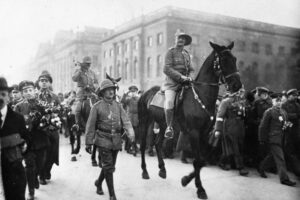 supplies that devastated the local population. Finally, the German army surrendered on November 25, 1918, in Zambia, two weeks after the November 11, 1918 armistice ended hostilities. Of course, Hitler knew a great officer when he saw one, and so after the war, Hitler immediately offered von Lettow-Vorbek a prestigious position in the Third Reich. In what most would consider a complete shock, von Lettow-Vorbeck bluntly refused the offer, using some very “colorful” language, which shall not be repeated here. It was a courageous, but not very wise move, given the circumstances. Nevertheless, his boldness, as well as his loyalty to the German people, paid off. Von Lettow-Vorbeck was simply too popular with the German people to be eliminated by the regime. He lived to be 94.
supplies that devastated the local population. Finally, the German army surrendered on November 25, 1918, in Zambia, two weeks after the November 11, 1918 armistice ended hostilities. Of course, Hitler knew a great officer when he saw one, and so after the war, Hitler immediately offered von Lettow-Vorbek a prestigious position in the Third Reich. In what most would consider a complete shock, von Lettow-Vorbeck bluntly refused the offer, using some very “colorful” language, which shall not be repeated here. It was a courageous, but not very wise move, given the circumstances. Nevertheless, his boldness, as well as his loyalty to the German people, paid off. Von Lettow-Vorbeck was simply too popular with the German people to be eliminated by the regime. He lived to be 94.

 The Hippopotamus is a large, lumbering animal found mostly in Africa, or in zoos in other places. These animals are rather hot blooded and since Africa is often hot too, the like to spend much of their day almost totally immersed in water in an effort to stay cool. The hippopotamus has a bulky body with stumpy legs, an enormous head with a mouth to match, a short tail, and four toes on each foot. Each of the toes has a nail-like hoof. Male hippos are usually about 11.5 feet long, stand 5 feet tall, and weigh 3.5 tons…yes that’s tons…strange considering their relatively short stature. The males are the larger gender in terms of physical size, weighing about 30 percent more than females. The nearly hairless skin is 2 inches thick on the flanks, but thinner elsewhere. Hippos are grayish brown in color, with pinkish underparts. Their huge mouth is half a meter wide and can gape 150° to show the teeth. When the mouth is open, the head almost completely disappears. The lower teeth are very sharp and can be more than 12 inches long.
The Hippopotamus is a large, lumbering animal found mostly in Africa, or in zoos in other places. These animals are rather hot blooded and since Africa is often hot too, the like to spend much of their day almost totally immersed in water in an effort to stay cool. The hippopotamus has a bulky body with stumpy legs, an enormous head with a mouth to match, a short tail, and four toes on each foot. Each of the toes has a nail-like hoof. Male hippos are usually about 11.5 feet long, stand 5 feet tall, and weigh 3.5 tons…yes that’s tons…strange considering their relatively short stature. The males are the larger gender in terms of physical size, weighing about 30 percent more than females. The nearly hairless skin is 2 inches thick on the flanks, but thinner elsewhere. Hippos are grayish brown in color, with pinkish underparts. Their huge mouth is half a meter wide and can gape 150° to show the teeth. When the mouth is open, the head almost completely disappears. The lower teeth are very sharp and can be more than 12 inches long.
Hippopotamus is Greek for “river horse” mainly because of their love of water. So much do they love the water, that Hippos spend up to 16 hours a day submerged in rivers and lakes to keep their massive bodies cool under the hot African sun. As clumsy as they might seem on land, hippos are graceful in water, good swimmers, and can hold their breath underwater for up to five minutes. Often, in the shallow lakes, hippos are large enough to simply walk or stand on the lake floor or lie in the shallows. Because their eyes and nostrils are located high on their heads, they have the ability to see and breathe while mostly submerged. While they spend a lot of time in the water, hippos also like to enjoy the sun on the shoreline and strangely, their bodies secrete an oily red substance, which is where the myth that they sweat blood came from. The liquid is actually a skin moistener and sunblock that may also provide protection against germs. What most people wouldn’t give to have built in moisturizer and sunblock…well, maybe not a heavy sunblock. Hippos come out of the water at sunset and begin their nightly feeding cycle. Often traveling up to six miles, they consume up to 80 pounds of grass. Now, that’s a lot of carbs, but given their size, that is not that much food. Hippos seem like a slow animal, but if they are threatened on land hippos may run for the water, and they can match a human’s speed…for short distances.
In the past, hippos have been used to pull a cart, much like a horse. I suppose it was a common site in Africa, 
 but for most of us today, it would be a strange sight indeed. There was a hippo in the Barnes Circus, names Lotus. Lotus was an obedient cart hippo, but I’m not so sure she was very happy about that cart that was hooked on behind her. It makes sense that she would be unhappy, she was in captivity, and that she couldn’t have been happy with her life. I wonder what would happen if Lotus had been spooked near a pond. My guess is that there would have been one wet driver.
but for most of us today, it would be a strange sight indeed. There was a hippo in the Barnes Circus, names Lotus. Lotus was an obedient cart hippo, but I’m not so sure she was very happy about that cart that was hooked on behind her. It makes sense that she would be unhappy, she was in captivity, and that she couldn’t have been happy with her life. I wonder what would happen if Lotus had been spooked near a pond. My guess is that there would have been one wet driver.
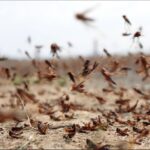
 No matter where you live, I’m sure you have had encounters with grasshoppers. They are an unfortunate fact of life in this world. Some years are worse than others, and some areas are worse than others too. There are a few facts about grasshoppers that I didn’t know about, and some I did. Unfortunately, there are no chemical pesticides to control grasshoppers, but since cool, moist conditions slow them down and encourage the growth of fungi (which cause disease in grasshoppers), keeping plant beds moist and well irrigated may help ward them off. To protect small areas, try using a sticky paper or screening. Most of us find that in dry hot years, the grasshoppers make us as miserable as the heat. Never was that more evident than on July 26, 1931, when a swarm of grasshoppers descended on crops throughout America’s heartland, devastating millions of acres. Iowa, Nebraska, and South Dakota were already suffering from a bad drought that brought severe damage to the crops in the region. The grasshoppers really just finished them off.
No matter where you live, I’m sure you have had encounters with grasshoppers. They are an unfortunate fact of life in this world. Some years are worse than others, and some areas are worse than others too. There are a few facts about grasshoppers that I didn’t know about, and some I did. Unfortunately, there are no chemical pesticides to control grasshoppers, but since cool, moist conditions slow them down and encourage the growth of fungi (which cause disease in grasshoppers), keeping plant beds moist and well irrigated may help ward them off. To protect small areas, try using a sticky paper or screening. Most of us find that in dry hot years, the grasshoppers make us as miserable as the heat. Never was that more evident than on July 26, 1931, when a swarm of grasshoppers descended on crops throughout America’s heartland, devastating millions of acres. Iowa, Nebraska, and South Dakota were already suffering from a bad drought that brought severe damage to the crops in the region. The grasshoppers really just finished them off.
Anyone who has grown a garden, crops, trees, and even grass, have struggled to prevent insects from eating their crops or plants. Locusts and grasshoppers, which are insect cousins, are among the most feared pests. If the conditions are right, their populations can suddenly explode, and while just their presence is enough to make most people’s skin crawl, the speed with which they are able to eat through a field of crops is impossible to comprehend, unless they have witnessed it for themselves. A plague of these insects occurs when drought conditions cause their populations to suddenly explode. The egg pods don’t do well in wet conditions, so when the soil is very dry, swarms can develop. “They explode from beneath your feet. There’s sort of a rolling wave that forms out in front of you. They hit up against your body and cling against your clothes. It’s almost like being immersed in a gigantic living being,” says Professor Jeff Lockwood of Wyoming.
The swarm in July of 1931 was so thick that it actually blocked out the sun. The grasshoppers had to be scooped up with a shovel. They ate the cornstalks down to the ground, leaving just stubs, and they ate 
 everything in the fields, down to the bare ground. Thankfully, the United States hasn’t seen swarms since the early 1930s. Many other areas of the world are not so fortunate. North Africa and parts of the Middle East continue to experience problems with insect swarms. In fact, the swarms in some of those areas have involved as many as a billion bugs. I don’t know about you, but now my skin is really crawling. Eeeeeeewwwwwwww!!
everything in the fields, down to the bare ground. Thankfully, the United States hasn’t seen swarms since the early 1930s. Many other areas of the world are not so fortunate. North Africa and parts of the Middle East continue to experience problems with insect swarms. In fact, the swarms in some of those areas have involved as many as a billion bugs. I don’t know about you, but now my skin is really crawling. Eeeeeeewwwwwwww!!
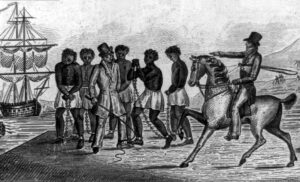
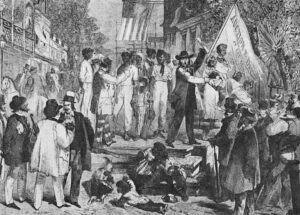 The years of slavery were awful for the African people who were sold into slavery by their own families or their countrymen. They were often stolen in the middle of the night, never to be in their homes again. Some of these slaves were young…some were even children. The terror must have been horrific. Nevertheless, it was what it was. Their life as they knew it was over. The journey to their new “home” was a hard one, and many people didn’t make it. That didn’t matter either, except in the revenue lost…they cared about that.
The years of slavery were awful for the African people who were sold into slavery by their own families or their countrymen. They were often stolen in the middle of the night, never to be in their homes again. Some of these slaves were young…some were even children. The terror must have been horrific. Nevertheless, it was what it was. Their life as they knew it was over. The journey to their new “home” was a hard one, and many people didn’t make it. That didn’t matter either, except in the revenue lost…they cared about that.
When the slaves arrived in the colonies, they didn’t have last names, or if they did, no one could really understand the last names. That didn’t matter to the slave sellers or the new master, because once sold, the slaves were given the last name of their masters, if they were given one at all. They were non-people. One must also understand that not all slaves were African. Many slaves came from Ireland too, but
I suppose it was easier to get away from their masters, because they were white too…not that they escaped, because where would they go. They were far away from their home too.
In those days, in Colonial America, slaves could win their freedom through lawsuits. I’m not sure what made them think they had a chance of winning their freedom. First of all, they had no money to get an attorney, and no attorney would have taken the case anyway. They had no way of proving their case, and what would their case have been? There was no code of conduct when it came to slaves. They could be beaten, raped, and even killed by their master. They could be overworked, under fed, and punished at will. There really was no case that could be made…as far as I can see anyway. As I said, there was a slim chance that a slave could bring a case, and even less chance that case. Nevertheless, even with that low chance of succeeding, winning in court meant 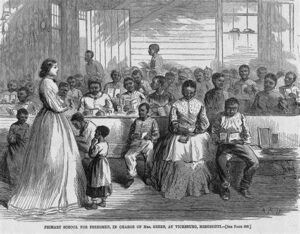
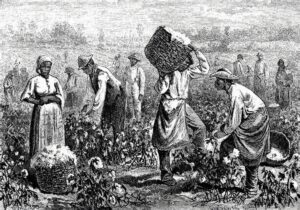 that the slave was now a citizen. They were free, and no one could dispute that again…legally anyway. The problem now was that these slaves had no last name, and they needed a last name to be a citizen. I seriously doubt they wanted to keep their master’s name. So, to solve the problem, the slaves were given the surname…Freeman. In my genealogist’s mind, there is no greater was to lose the true line of a family than such a name change.
that the slave was now a citizen. They were free, and no one could dispute that again…legally anyway. The problem now was that these slaves had no last name, and they needed a last name to be a citizen. I seriously doubt they wanted to keep their master’s name. So, to solve the problem, the slaves were given the surname…Freeman. In my genealogist’s mind, there is no greater was to lose the true line of a family than such a name change.

 It is the symbol of love. It’s a big part of the thing every girl wants to receive from the man she loves. Lot’s of people think that the size of the diamond is a show of stature, and I suppose it is, but there can be a point that would qualify as extreme. Such was the case on January 25, 1905, at the Premier Mine in Pretoria, South Africa, when a 3,106 caret diamond was discovered during a routine inspection by the mine’s superintendent. Weighing 1.33 pounds, and christened the “Cullinan,” it was the largest diamond ever found. Now, girls…I’m sure that you would love to have a large diamond ring, but carrying around a 1.33 pound ring on your finger would be just a little bit much. Still, I would have thought that the owner might have cut the stone into as large a cut stone as possible to be used for a museum piece, but he had very different plans.
It is the symbol of love. It’s a big part of the thing every girl wants to receive from the man she loves. Lot’s of people think that the size of the diamond is a show of stature, and I suppose it is, but there can be a point that would qualify as extreme. Such was the case on January 25, 1905, at the Premier Mine in Pretoria, South Africa, when a 3,106 caret diamond was discovered during a routine inspection by the mine’s superintendent. Weighing 1.33 pounds, and christened the “Cullinan,” it was the largest diamond ever found. Now, girls…I’m sure that you would love to have a large diamond ring, but carrying around a 1.33 pound ring on your finger would be just a little bit much. Still, I would have thought that the owner might have cut the stone into as large a cut stone as possible to be used for a museum piece, but he had very different plans.
Frederick Wells was 18 feet below the earth’s surface when his light flashed off of something embedded in the wall just above him. I’m sure he had a pretty good idea of what he had. His discovery was immediately presented to Sir Thomas Cullinan, the mine’s owner. Cullinan decided to sell the diamond to the Transvaal provincial government. Transvaal presented the stone to Britain’s King Edward VII as a birthday gift. They were worried that the diamond might be stolen while in transit from Africa to London, so King Edward VII arranged to send a phony diamond aboard a steamer ship guarded by detectives as a diversionary tactic. While the decoy slowly made its way from Africa on the ship, the Cullinan was sent to England in a plain box. It was an amazing plan, and I can certainly understand their concerns. King Edward VII entrusted the cutting of the Cullinan to Joseph Asscher, head of the Asscher Diamond Company of Amsterdam. Asscher had cut the famous Excelsior Diamond, a 971 carat diamond found in 1893. He studied the Cullinan stone for a full six months before even attempting the cut. On his first attempt, the steel blade broke, with no effect on the diamond. That had to be enough to break his confidence. On the second attempt, the diamond shattered exactly as planned, but Asscher fainted from nervous exhaustion immediately after.
The Cullinan was later cut into nine large stones and about 100 smaller ones. In total, the diamonds were  valued at millions of dollars. The largest stone is called the “Star of Africa I,” or “Cullinan I,” and at 530 carats, it is the largest cut fine quality colorless diamond in the world. The second largest stone, the “Star of Africa II” or “Cullinan II,” is 317 carats. Both of these stones, as well as the “Cullinan III,” are on display in the Tower of London with Britain’s other crown jewels, so I guess that part of the diamond ended up in a museum. The Cullinan I is mounted in the British Sovereign’s Royal Scepter, while the Cullinan II sits in the Imperial State Crown. Both fitting placements for such stones. Of course, the value of the stones would increase with cutting. The original stone was insured for $1,250,000 in 1905, and would be valued at $30,179,000 today.
valued at millions of dollars. The largest stone is called the “Star of Africa I,” or “Cullinan I,” and at 530 carats, it is the largest cut fine quality colorless diamond in the world. The second largest stone, the “Star of Africa II” or “Cullinan II,” is 317 carats. Both of these stones, as well as the “Cullinan III,” are on display in the Tower of London with Britain’s other crown jewels, so I guess that part of the diamond ended up in a museum. The Cullinan I is mounted in the British Sovereign’s Royal Scepter, while the Cullinan II sits in the Imperial State Crown. Both fitting placements for such stones. Of course, the value of the stones would increase with cutting. The original stone was insured for $1,250,000 in 1905, and would be valued at $30,179,000 today.
 When I come across a husband and wife, who both died on the same day, my curiosity kicks into overdrive. That just seems so unusual. Nevertheless, such was the case for my husband, Bob’s 4th great grandparents, Cloudsbury and Elizabeth Kirby, both of whom died on August 29, 1878 in Mount Ayr, Ringgold County, Iowa. At first, I wondered if it was an error, and I suppose it could be, but that is the information I have at this point, so that is what I have to go with.
When I come across a husband and wife, who both died on the same day, my curiosity kicks into overdrive. That just seems so unusual. Nevertheless, such was the case for my husband, Bob’s 4th great grandparents, Cloudsbury and Elizabeth Kirby, both of whom died on August 29, 1878 in Mount Ayr, Ringgold County, Iowa. At first, I wondered if it was an error, and I suppose it could be, but that is the information I have at this point, so that is what I have to go with.
My first thought was to check for disasters in the area, like tornados, fires, or floods, but I was unable to find anything that specifically happened in Mount Ayr, Iowa on August 29, 1878. Looking for these kinds of specific things can be a long and frustrating process, but I just can’t imagine too many situations where both halves of a couple would pass on the same day. I searched and found that there were tornadoes during that year, but nothing specifically on that day, so I doubt that a tornado is the culprit here.
When the possibility of a disaster was removed, I began to think about illness, so I looked up and epidemics in the area. That is when I came across a definite possibility…the Yellow Fever Epidemic of 1876 to 1878, which took many lives in the southern United States. Yellow fever, known historically as yellow jack or yellow plague is an acute viral disease, that is usually spread by the female mosquito. Symptoms include fever, chills, loss of appetite, nausea, muscle pains particularly in the back, and headaches. Many people improve after a few days, but when the symptoms return, they can cause kidney damage, liver failure (causing yellow skin, probably the reason for the name Yellow Fever), bleeding, and ultimately death. These days there is a vaccine against Yellow Fever and some countries require it for travelers. Other countries try to control the virus by killing off as many mosquitoes as possible. Nevertheless, Yellow Fever causes 200,000 infections and 30,000 deaths every year with nearly 90% of those occurring in Africa, these days. Since the 17th century, several major outbreaks have occurred in America, Africa, and Europe. In the 18th and 19th centuries yellow fever was seen as the most dangerous of infectious diseases.
I can’t say for sure that Yellow Fever is what took the lives of Bob’s 4th great grandparents, but with the epidemic that occurred during that time, I have to think that it is a possibility. I have looked at the lists of people know to have died of Yellow Fever during that epidemic, and did not see Cloudsbury and Elizabeth Kirby on the list, but the list was incomplete, with many people only listed as a number. At this time, unless more information somehow surfaces, I will probably never know for sure, but the epidemic, which apparently came in from Cuba caused 100,000 people to become ill, and killed 20,000 people, so it is likely that they were too busy, trying to help people get better, to keep really great records as to the names of the dead. I have to feel really sorry for people of that time. They didn’t really know what was causing the epidemic and would not have had a way to do much about it anyway, so many lives were lost. Thankfully for the people of this century, Yellow Fever can be prevented by vaccination, and it is usually found in Africa, so we don’t really see much of it here.
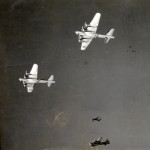
 Yesterday, I read a tribute written by the grandchild of an airman who served in a B-17 Bomber during World War II, and I found myself both curious and a little annoyed by the first few lines of the story. Oh, I know that the writer was as proud of his grandfather, as I am of my dad, but when the story started out saying that in order to go home, those men had to fly twice as many missions as the 25 my dad’s group had to fly, I got really curious. My search for information would lead me to probably the same “bone chilling” feeling as the other author’s information had. The author’s grandfather, like my dad, was the flight engineer, except that he had been stationed in Northern Africa, where my dad had been in England, at Great Ashfield. While I don’t dispute his grandfather’s bone chilling missions, I’m nevertheless, not sure he understood what the fighting was like in England, and especially at Great Ashfield.
Yesterday, I read a tribute written by the grandchild of an airman who served in a B-17 Bomber during World War II, and I found myself both curious and a little annoyed by the first few lines of the story. Oh, I know that the writer was as proud of his grandfather, as I am of my dad, but when the story started out saying that in order to go home, those men had to fly twice as many missions as the 25 my dad’s group had to fly, I got really curious. My search for information would lead me to probably the same “bone chilling” feeling as the other author’s information had. The author’s grandfather, like my dad, was the flight engineer, except that he had been stationed in Northern Africa, where my dad had been in England, at Great Ashfield. While I don’t dispute his grandfather’s bone chilling missions, I’m nevertheless, not sure he understood what the fighting was like in England, and especially at Great Ashfield.
It is true that the crews at Great Ashfield only flew 25 missions before going home. The reasons are maybe even more bone chilling than the mission report the other author was reading. The article I found puts it like this. “The average life of a B-17 bomber at Great Ashfield was just over 4 months. Very few B-17 bombers that were transferred to the base lasted a complete tour of duty. The average Airman lasted 15 combat missions and few completed an entire tour of 25 missions. Much less 35 !!!! The average LIFE of a Ball Turret Gunner in combat was 12 MINUTES.” Thankfully my dad was not the ball turret gunner, but rather the top turret gunner…still, Great Ashfield was where my dad had served!!! And he was one of those “few” who lived to go home. His plane was one of those “very few” Bombers that lasted a complete tour of duty. In all the years that I have known about my dad’s war years, I guess that I didn’t really allow myself to think about what could have happened…probably because it was too hard to think about.
Even when Dad told me about the 3 Poplar trees at the end of the runway…the landmark that let them know that for another mission, at least, they were safely home. I can’t imagine what it must have been like to board that B-17 Bomber in the morning, not knowing whether or not you would see the base again…much less your family. Then to see those trees, and to know that you were safe, would be almost overwhelming.

 I am no longer annoyed at the author of the other article, and I agree that his grandfather is just as much a hero as my dad is. Both of these men bravely stepped into those planes every time they were told to, and flew off into battle, not knowing if they would return. Rather than feeling annoyed, I feel a kinship to the other author, because had circumstances ended differently neither of us would have existed. Our lives are what they are, because his grandfather and my dad were among the few who survived battle in a B-17 Bomber, and among the few whose B-17 Bomber and the grace of God, brought them safely home to their families.
I am no longer annoyed at the author of the other article, and I agree that his grandfather is just as much a hero as my dad is. Both of these men bravely stepped into those planes every time they were told to, and flew off into battle, not knowing if they would return. Rather than feeling annoyed, I feel a kinship to the other author, because had circumstances ended differently neither of us would have existed. Our lives are what they are, because his grandfather and my dad were among the few who survived battle in a B-17 Bomber, and among the few whose B-17 Bomber and the grace of God, brought them safely home to their families.
 When kids are little, the whole meal thing can be…well, a challenge. No kid is the same, and there are always things they don’t like to eat. To make matters worse, if you were raised in my generation, you were always told that you needed to clean up your plate, because there were children starving in Africa. It occurred to us that our not cleaning our plate was not going to help them anyway, but that was still the thing we were told. Of course, our parents were trying to teach us not to be wasteful, but when I was looking at tomatoes or peas…which I still do not really like, it didn’t make any difference, because I figured that if those children in Africa wanted my tomatoes or peas, they were welcome to them…just get me a to go box and I’d figure out a way to pay the postage.
When kids are little, the whole meal thing can be…well, a challenge. No kid is the same, and there are always things they don’t like to eat. To make matters worse, if you were raised in my generation, you were always told that you needed to clean up your plate, because there were children starving in Africa. It occurred to us that our not cleaning our plate was not going to help them anyway, but that was still the thing we were told. Of course, our parents were trying to teach us not to be wasteful, but when I was looking at tomatoes or peas…which I still do not really like, it didn’t make any difference, because I figured that if those children in Africa wanted my tomatoes or peas, they were welcome to them…just get me a to go box and I’d figure out a way to pay the postage.
My parents didn’t go for that, so I had to sit there until I cleaned up my plate. Yuck!! I tried everything I could think of to get out of it. I would put a forkful of peas in my mouth and then spit them into my napkin, but the darned things wouldn’t always stay in there, so I ended up getting them back. After a while, I learned how to make them stay in there pretty good, but I still got caught most of the time. Now tomatoes were a different story. Putting a forkful of stewed tomatoes in my mouth produced a pretty much instant gagging effect that was not faked, and trying to swallow was almost worse. I learned to plug my nose and swallow those nasty things whole…and quickly.
Sometimes, it isn’t a matter of not liking a food, but taking more than you can eat. My sister, Alena found that out on Thanksgiving one year, when she wanted to have the entire turkey leg. She argued with my dad about it until he finally gave in and let her have the entire turkey leg. Of course, she couldn’t eat it all, so Dad said she could have it the next day. Well, she still couldn’t eat it all, so she got it the next day…and the next. By that time it was covered with cranberry sauce and gravy, and just the  site of it made Alena cringe. Dad would get that silly turkey leg out every day, and try to hide his emotions when he handed it to Alena. Finally, the turkey leg ended up in the trash, and to this day, Alena doesn’t eat the leg on turkey or chicken.
site of it made Alena cringe. Dad would get that silly turkey leg out every day, and try to hide his emotions when he handed it to Alena. Finally, the turkey leg ended up in the trash, and to this day, Alena doesn’t eat the leg on turkey or chicken.
Yes, food can be an issue with kids , but eventually they outgrown that pickiness…or just grow up and move out, so they can make their own food choices. There are some things that I still don’t like…and probably never will, but as I found out recently with Avocados, it never hurts to try thing again once in a while, because your tastes might change. You never know, but tomatoes and peas…well not yet.

